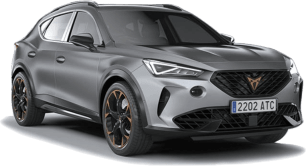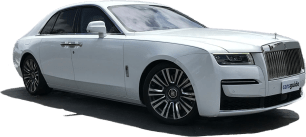So, if this Rolls is designed to be driven, what’s it like behind the wheel? Well for a start, it’s plush. As in, the front seats are big and comfortable, but surprisingly supportive and endlessly adjustable.
The digital instrument cluster tips its hat to classic RR dials, and despite thick pillars (especially the bulky B-pillars) vision all around is good.
And if you’re thinking 2553kg is a lot of Ghost to get moving, you’re right. But there’s nothing like applying 420kW/850Nm of twin-turbo V12 muscle to the task.
Peak torque is available from just 1600rpm (600rpm above idle) and Rolls-Royce claims 0-100km/h in 4.8sec. Plant the right foot and this car will calmly have you at throw-away-the-key speeds in the blink of an eye, the eight-speed auto shifting imperceptibly all the way. And even at full throttle, engine noise is relatively subtle.
But aside from that prodigious thrust, the next eye-opener is unbelievable ride quality. Rolls calls it ‘Magic Carpet Ride’, and it’s no exaggeration.
The bumpy road surface disappearing under the front wheels just doesn’t compute with the unruffled, perfectly smooth progress you’re experiencing. It is unbelievable.
I’ve only had that sensation once before, behind the wheel of a Bentley Mulsanne, but this was possibly even more surreal.
Rolls-Royce’s ‘Planar’ suspension system refers to, “a geometric plane which is completely flat and level”, and it works.
The set-up is double wishbones at the front (incorporating a unique to RR upper wishbone damper) and a five-link arrangement at the rear. But it’s the air suspension and active damping that create the magic Rolls calls “flight on land.”
A ‘Flagbearer’ stereo camera system in the windscreen reads the road ahead to proactively adjust the suspension up to 100km/h. It’s name recalls the early days of ‘motoring’ where a person waving a red flag walked in front of cars to warn unwary pedestrians. This slightly more sophisticated approach is just as arresting.
This time around the Ghost is all-wheel drive (rather than RWD) and it puts its power down brilliantly well. We dared to push it fairly aggressively on a twisting B-road section and all four fat Pirelli P Zero tyres (255/40 x 21) kept things on track without so much as a squeal.
A 50/50 weight distribution and the stiffness of the car’s aluminium space-frame architecture help keep it balanced, planted and under control. But on the flip side, steering feel is almost completely MIA. Numb and overly light, it’s the missing link in the Ghost’s otherwise impressive dynamic performance.
Drop into a freeway cruise and you become aware of the impossibly low noise level. But it’s not as quiet as it could be. Rolls says it’s able to achieve near silence, but adds that becomes disorienting, so it introduced an ambient “whisper”... “a single, subtle note.”
To achieve this level of calm the bulkhead and floor have been double-skinned, interior components are tuned to a specific resonance frequency, and there’s 100kg worth of acoustic damping materials within nearly half the architecture of the car, in the doors, roof, double-glazed windows, even inside the tyres.
The four-wheel steering system helps with agility on the highway (where the front and rear axles steer in unison), but comes into its own at parking speeds (where they counter-steer), because even with numerous cameras and sensors, parking this 5.5m long, 2.5-tonne machine is quite an undertaking. Turning circle is still 13.0m, though, so beware. If all else fails, the car will park itself, anyway.
Beefy ventilated disc brakes front and rear wash off speed progressively and without a hint of drama.
Other highlights? The multimedia system is the only thing openly borrowed from BMW, but that’s not a problem because the interface is great. And that 1300W, 18-speaker 18-channel audio system absolutely cranks!

